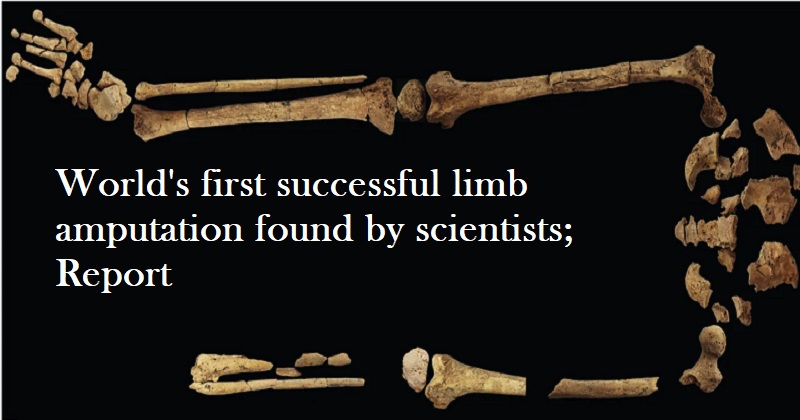
According to a new study, researchers discovered solid evidence that the first successful human limb amputation occurred 31,000 years ago. According to a study published on September 7 in Nature, a Stone Age human skeleton was discovered buried in the Liang Tebo limestone cave in East Kalimantan, Borneo, Indonesia. It shows that the patient’s left foot had been amputated and had healed.
Tim Maloney, the study’s principal author and an archaeologist at Griffith University in Australia, told reporters at a news briefing on September 7 that the skeleton was discovered in 2020 when scientists went to the site where some of the oldest rock art had previously been unearthed. They were seeking archaeological deposits that could be associated with this early rock art.
According to Maloney, the researchers inspected the corpse ‘slowly and meticulously,’ cleaning away debris from the burial place and taking images and laser scans of it. After the skeleton was discovered, it was ‘quite clear’ that the left foot was ‘totally absent’ and that the lower or distal portion of their left leg had been severed. A paleopathologist, according to Maloney, concurred that the bones supported multiple clinical occurrences of purposeful amputation.
Amputations need a high level of technical expertise, as well as an understanding of human anatomy and surgical cleanliness. The findings were noteworthy, according to the researchers, because amputations require great technical expertise as well as an understanding of human anatomy and surgical cleanliness. Furthermore, prior to modern therapeutic advances like antiseptics, the majority of people who had amputation surgery died from blood loss, shock, or infection.
According to the experts, the bones belonged to a young individual who underwent the treatment but survived and lived for another six to nine years. Furthermore, the study discovered that in order to minimize lethal blood loss and infection, the person conducting the amputation needs to have a full awareness of limb anatomy, muscles, and blood arteries.
Because animal assaults and other mishaps typically result in crushing fractures, the researchers concluded that these were unlikely causes of the amputation. According to Maloney, the skeleton gave ‘quite a great pathological record of this individual and their burial,’ as well as a lot of information about the Borneo population between 1,26,000 and 11,700 years ago.

Post Your Comments